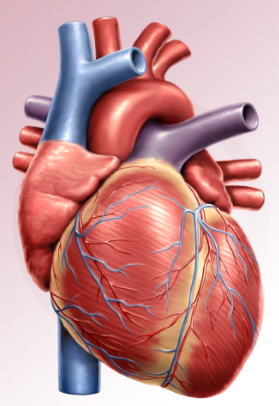

The right ventricle: you're only as strong as your weakest pump

The heart is a 4-chambered organ with two sides- the left heart which pumps to the periphery and the right heart which pumps to the lungs. Cardiac function is limited by the performance of its weakest ventricle, meaning that even in contexts of healthy left ventricular (LV) function, right ventricular (RV) dysfunction can still be detrimental. In the setting of many human diseases and with healthy aging, RV function predicts survival. Our group is interested in understanding how the right heart fails and identifying therapeutic targets for the RV.

The heart as a regulator of circadian rhythms

Most biological processes are controlled by a molecular clock. Disruption of clock activity causes a multitude of chronic diseases including cardiovascular disease, the leading global cause of death. Although all tissues are under circadian control, master regulation of the clock occurs in the suprachiasmatic nucleus (SCN). The SCN communicates with peripheral tissues such as the heart and skeletal muscle to synchronize circadian output. What remains unclear, however, is what, if any, control non-SCN tissues have over circadian function. We aim to identify the mechanisms by which the heart regulates circadian rhythms independent of central control.

Mechanisms of RV dysfunction in diabetes

Heart failure in the presence of diabetes is common and expensive, with some estimates suggesting that diabetic cardiomyopathy is present in up to 60% of patients with diabetes. Although diabetic cardiomyopathy by definition is the presence of LV diastolic dysfunction, limited but rigorous reports including recently published work from our group demonstrate that the RV also remodels with diabetes. Given that RV dysfunction is the strongest predictor of mortality in several cardiovascular disease contexts, we aim to identify RV-specific mechanisms of diabetic cardiomyopathy.

Striated cardiac and skeletal muscle have distinct responses to hypoxia

Striated muscle including skeletal muscle (SkM), RV, and LV cardiac muscle makes up over 40% of mammalian body mass and enables locomotion and blood delivery. While these muscle types share structure and contractile function, they are fundamentally distinct and respond differently to stress. Our ongoing work shows that under hypoxia, SkM undergoes atrophy, the RV develops hypertrophy, and the LV remains unchanged. We aim to uncover the distinct and shared molecular mechanisms driving these divergent hypoxia responses in striated muscles.

Declines in PAD2 and myocardial citrullination contribute to diastolic dysfunction in the aging female heart

Post-translational modifications (PTMs) of myocardial proteins are key regulators of cardiac function. Citrullination, an understudied PTM catalyzed by peptidylarginine deiminase (PAD) enzymes, converts arginine residues to citrulline. We found that the primary cardiac isoform, PAD2, declines with age in the female but not male heart, accompanied by reduced citrullination of cardiac proteins. Our goal is to determine how loss of PAD2 and myocardial citrullination drives diastolic dysfunction in the aging female heart.

Heart failure across the life-course

Heart failure impacts patients of all ages- from pediatrics to geriatrics. The risk factors, disease development, and treatment outcomes differ by patient age and sex, suggesting that important differences exist that might impact therapeutic strategies. We aim to understand how age and sex impact disease development, and use these differences to develop personalized medicine for heart failure patients of all ages.
